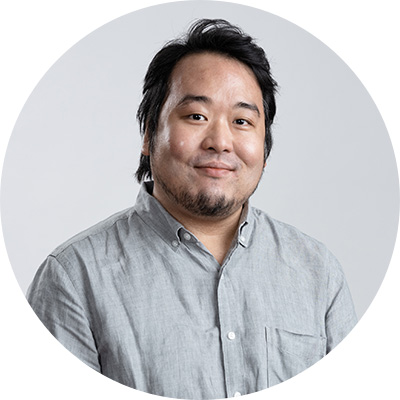Research in the Vascular Biology Laboratory focuses on creating small blood vessel networks for tissue regeneration, both in tissue engineering of new organs or tissues, or as part of a skin wound-healing response.
The team’s work originally focused on the spontaneous formation of capillary networks that sprout from large blood vessels isolated in a tissue engineering chamber in an animal. This chamber model has grown cardiac muscle, fat, pancreatic islets and liver tissue. More recently, the team has focused on growing capillary networks in the laboratory that are incorporated into engineered tissues, or organs such as skin tissue or liver organoids.
A major problem in assembling three-dimensional engineered tissues and organs is providing an interconnected blood vessel network throughout the engineered tissue. When transplanted into living tissue, this enables structural and functional linking to host blood vessels. If this union of lab-grown small blood vessels to host tissue blood vessels can occur, then a rapid blood flow will be supplied to the lab-grown tissues – enabling their survival and function in the host.
Proudly supported by the O’Brien Foundation.
Current research projects
-
Pre-vascularisation of porous scaffolds for wound healing
The aim of this study is to form human capillary (small blood vessel) networks from human endothelial cells and transplant into animal wound models. This project aims to increase the number of blood vessels in difficult to heal wounds.
Staff members involved: Dr Anne Kong and Associate Professor Geraldine Mitchell
Relevant publications
Kong AM, Yap KK, Lim SY, Marre D, Pebay A, Gerrand Y-W, Palmer JA, Lees JG, Morrison WA and Mitchell GM, Bio-engineering a tissue flap utilizing a porous scaffold incorporating a human induced pluripotent stem cell derived endothelial cell capillary network connected to a vascular pedicle. Acta Biomaterialia. 2019 Aug;94:281-294.
Kong AM, Lim SY, Palmer JA, Rixon A, Gerrand Y-W, Yap KK, Morrison WA and Mitchell GM, Engineering transplantable human lymphatic and blood capillary networks in a porous scaffold, Accepted for publication in the Journal of Tissue Engineering, November 7, 2022.
Creating a human liver organoid to treat liver diseaseThe project aims to assemble human liver organoids from liver progenitor cells, liver endothelial cells and mesenchymal stem cells. The cells are isolated from human liver and fat tissues available from discarded tissues at operation. In parallel, we are also deriving these cells from human induced pluripotent stem cells and also forming human liver-like organoids. All organoids are formed in the laboratory, with the aim of using them to replace diseased liver tissue in a patient.
Dr Kiryu Yap and Ms Yi-wen Gerrand are completing this project. They have had other staff members and students involved, including: Mr Samarth Khandelwal and Ms Evelyn Makris (Honours students), Ms Pu-Han Lo and Mr Denis Shi (Research Assistants).
Relevant publications
Yap KK, Dingle AM, Palmer JA, Dhillon R, Lokmic Z, Penington AJ, Yeoh GC, Morrison WA, Mitchell GM, Enhanced liver progenitor cell survival and differentiation in vivo by spheroid implantation in a vascularized tissue engineering chamber, Biomaterials. 2013 May;34(16):3992-4001.
Yap KK, Yeoh GC, Morrison WA, Mitchell GM. The vascularised chamber as an in vivo bioreactor. Trends in Biotechnology, 2018 Oct;36(10):1011-1024.
Dingle AM*, Yap KK*, Gerrand Y-W, Taylor CJ, Keramidaris E, Lokmic Z, Kong AM, Peters HL, Morrison WA and Mitchell GM. Characterization of isolated liver sinusoidal endothelial cells for liver bio-engineering. Angiogenesis, 2018, 21(3), 581-597. *joint first authors.
Yap KK, Gerrand Y-W, Dingle AM, Yeoh GC, Morrison WA, Mitchell GM, Liver sinusoidal endothelial cells promote the differentiation and survival of mouse vascularised hepatobiliary organoids. Biomaterials. 2020 Aug;251:120091. doi: 10.1016/j.biomaterials.2020.120091.
Yap KK, Mitchell GM, Recapitulating the liver niche in vitro. In Nilsson S (editor): ‘Recapitulating the stem cell niche ex vivo’ Chapter 1, published by Elsevier, July 2022.
Bio-engineering a skin flapTissue flaps are used routinely in reconstructive surgery for coverage of acute or chronic wounds caused by trauma, cancer resection, and diabetes. Flaps consist of a large artery and vein (vascular pedicle) connected to a capillary network within a block of skin/fat/muscle. Flaps are harvested from one area of the body to cover defects at another site. However, tissue flaps have limited availability, are morbid and involve complex, costly surgery with high complication rates. A bioengineered alternative would be a major advance in the field of reconstructive surgery.
This research project aims to connect human induced Pluripotent Stem Cell (hiPSC)-derived small blood vessels assembled in the lab to a 3D printed branched larger vessel seeded with hiPSC endothelial cells (ECs), and hiPSC derived vascular smooth muscle cells (vSMC), thus forming a human tissue flap in vitro. The blood vessel components will be covered by hiPSC-derived skin.
Dr Cathal O’Connell (RMIT) supervises the 3D printing of the branched vessels. Dr Anne Kong and Dr Kate Firipis and Associate Professor Geraldine Mitchell are other group members involved in this project.
People


Available for Student Supervision

Research Officer, Cardiac Regeneration and Vascular Biology laboratories (O'Brien Department)
View Profile

Available for Student Supervision
Staff
- Dr Kate Firipis, Postdoctoral Fellow (Mackenzie Hummingbirds Fellowship)
- Ms Yi-wen Gerrand, Research Assistant
- Mr Denis Shi, Research Assistant
- Dr Kurt Brassington, Research Officer
Alumni
- Mr Samarth Khandelwal (Honours)
- Ms Evelyn Makris (Honours)
Student projects
Stem cell-derived human liver organoids for regenerative medicine
Lab: Vascular Biology
Supervisor(s): Dr Kiryu Yap
Diseases focus: Regenerative MedicineSelected publications
Yap KK, Yeoh GC, Morrison WA, Mitchell GM. The vascularised chamber as an in vivo bioreactor. Trends in Biotechnology, 2018 Oct;36(10):1011-1024.
Dingle AM*, Yap KK*, Gerrand Y-W, Taylor CJ, Keramidaris E, Lokmic Z, Kong AM, Peters HL, Morrison WA and Mitchell GM. Characterization of isolated liver sinusoidal endothelial cells for liver bio-engineering. Angiogenesis, 2018, 21(3), 581-597. *joint first authors.
Yap KK, Gerrand Y-W, Dingle AM, Yeoh GC, Morrison WA, Mitchell GM, Liver sinusoidal endothelial cells promote the differentiation and survival of mouse vascularised hepatobiliary organoids. Biomaterials. 2020 Aug;251:120091. doi: 10.1016/j.biomaterials.2020.120091.
Yap KK, Mitchell GM, Recapitulating the liver niche in vitro. In Nilsson S (editor): ‘Recapitulating the stem cell niche ex vivo’ Chapter 1, published by Elsevier, July 2022.
Kong AM, Yap KK, Lim SY, Marre D, Pebay A, Gerrand Y-W, Palmer JA, Lees JG, Morrison WA and Mitchell GM, Bio-engineering a tissue flap utilizing a porous scaffold incorporating a human induced pluripotent stem cell derived endothelial cell capillary network connected to a vascular pedicle. Acta Biomaterialia. 2019 Aug;94:281-294.
Kong AM, Lim SY, Palmer JA, Rixon A, Gerrand Y-W, Yap KK, Morrison WA and Mitchell GM, Engineering transplantable human lymphatic and blood capillary networks in a porous scaffold, Accepted for publication in the Journal of Tissue Engineering, November 7, 2022.
ORCID profile: 0000-0003-1092-8630